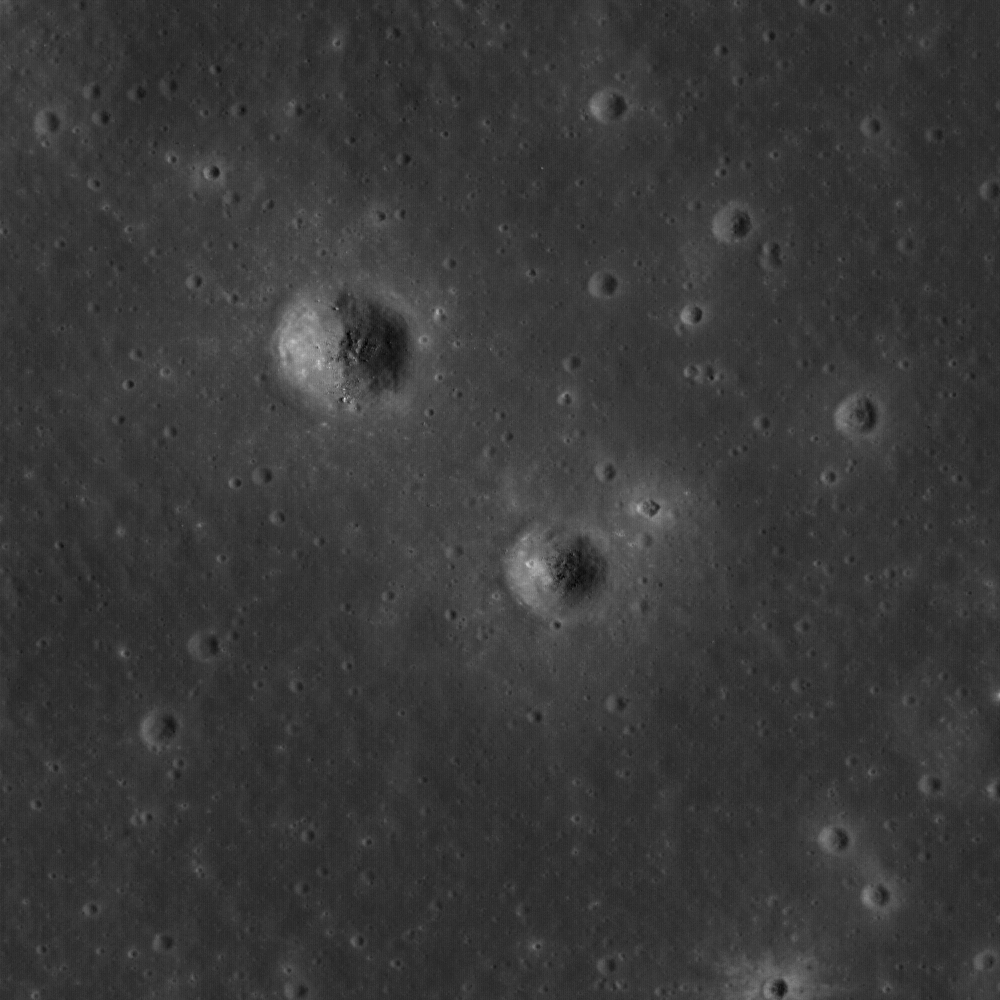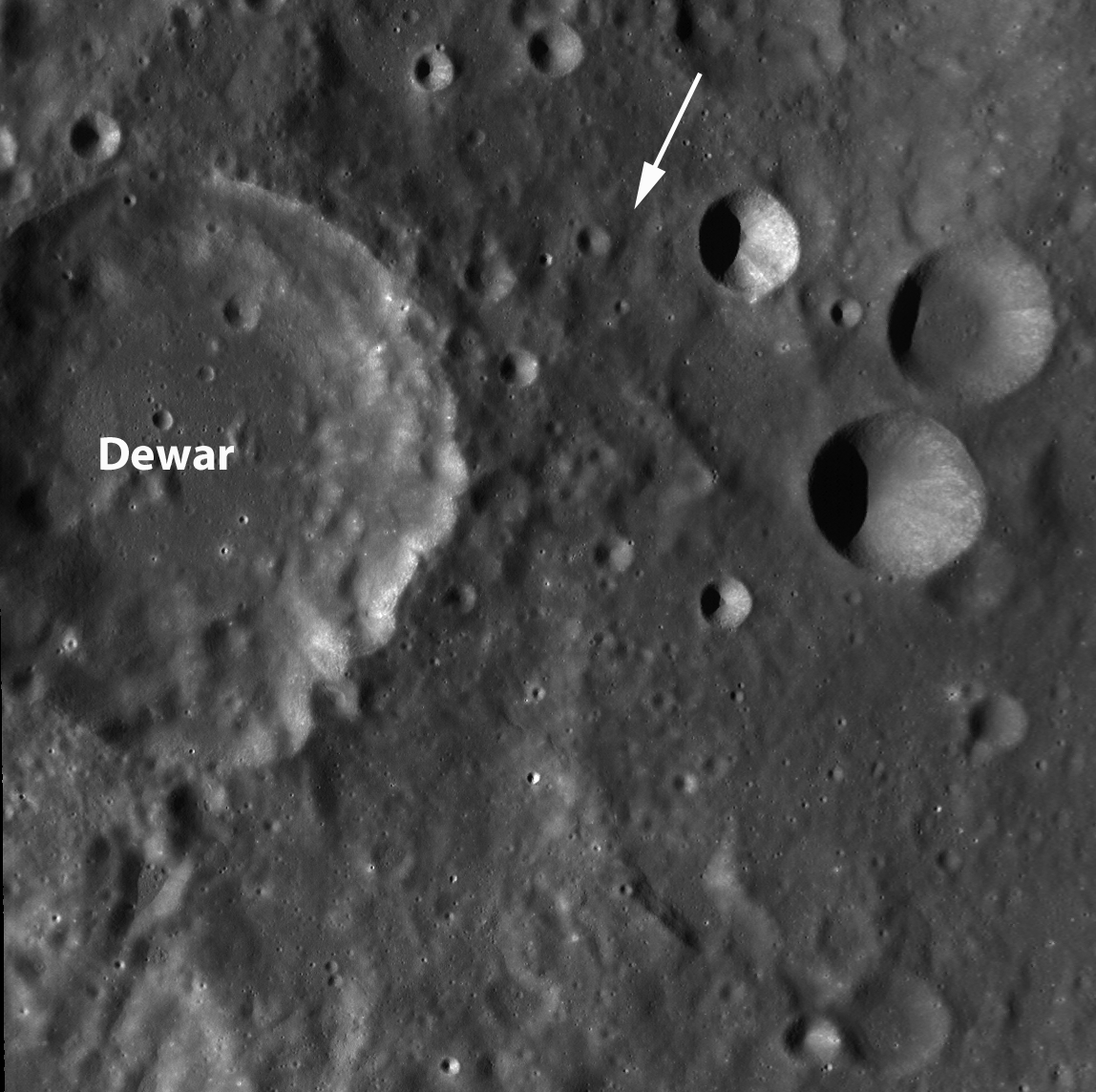
This area is the heart of the Dewar geochemical anomaly, one of only a handful of mare deposits on the far side of the Moon. Unlike many mare basalts, such as those that fill Mare Moscoviense, the Dewar deposit is not associated with a giant impact basin, but is instead an ancient and mostly buried mare deposit known as a "cryptomare." Apollo-era imaging of this location was extremely limited; although this region was visible as low-reflectance material in Lunar Orbiter images, the mare deposit was not definitively identified as such until 2008. This discovery came from detailed analysis of multispectral images from Clementine and geochemical information returned by the Lunar Prospector spacecraft. Results from these two missions revealed that the low-reflectance materials are spectrally similar to nearside mare basalts, have elevated levels of iron and titanium, and are enriched in the element thorium. So although the Dewar materials are geochemically anomalous in the context of the lunar farside highlands, they are surprisingly similar to nearside basalts. The small craters that you see in today's Featured Image have excavated material from within the mare deposit. Astronauts visiting craters such as these would be able to unravel clues to the stratigraphy and age of the Dewar basalts.
Of particular interest is the fact that the Dewar deposits are enriched in thorium. Thorium is an incompatible element, which means that typically it does not get incorporated into magmas until the source is almost completely depleted (or, to put it another way, until there is nothing else left to erupt). Thorium is relatively easy to detect with remote sensing methods because it is radioactive, and when thorium is detected on the surface it is usually safe to assume that other incompatible elements, like the famous lunar KREEP component, are present along with it. These incompatible components are key to understanding the history and mechanics of lunar volcanism and the evolution of the lunar crust. On the nearside, many of the mare basalts have high thorium concentrations compared to the typically low concentrations on the farside. Surprisingly, the thorium abundances in the Dewar region (as well as Mare Moscoviense, which lies to the northwest) are even higher than nearside basalts, which has some important implications for lunar geology. Instead of the thorium being concentrated only on the nearside, the portions of the far side interior (including the mantle and the lower crust) that produced the magmas emplaced in Dewar and Moscoviense were also rich in thorium. Why are incompatibles concentrated on the nearside? What do these small, high-thorium regions on the farside mean? How did the lunar interior evolve to produce this asymmetric distribution of incompatible elements on the Moon? Many important questions remain unanswered.
The geology of this region is complicated and intriguing, and until it is directly explored by astronauts, interpretations based solely on remote sensing data will be challenging. For this reason, this area is a Constellation region of interest. The presence of mare basalts also makes this area a resource utilization candidate, since mare materials are so rare on the farside.
For more information about the Dewar cryptomare, be sure to check out Planetary Science Research Discoveries.
Plan your own adventure to Dewar crater below!
Published by Samuel Lawrence on 10 June 2010
